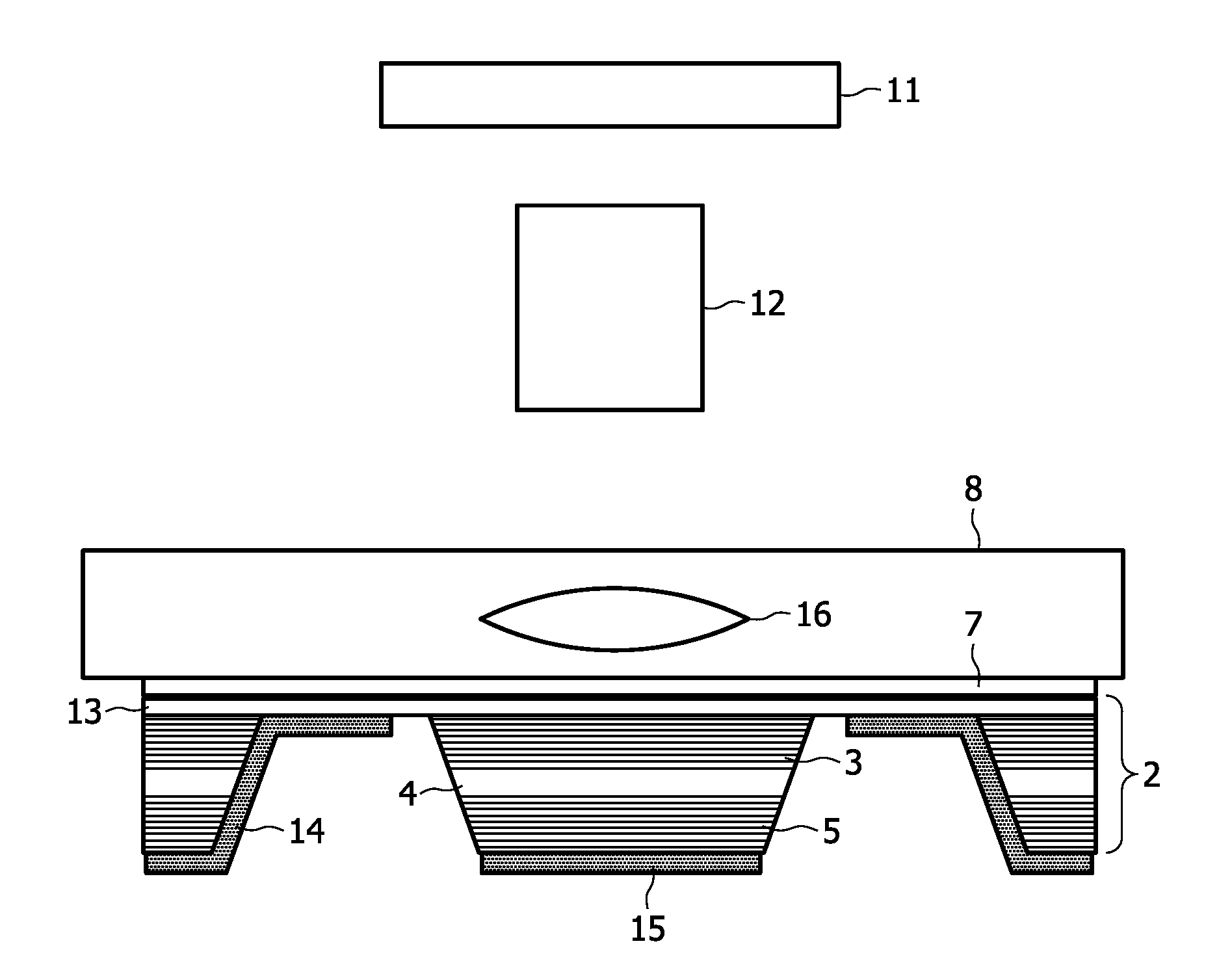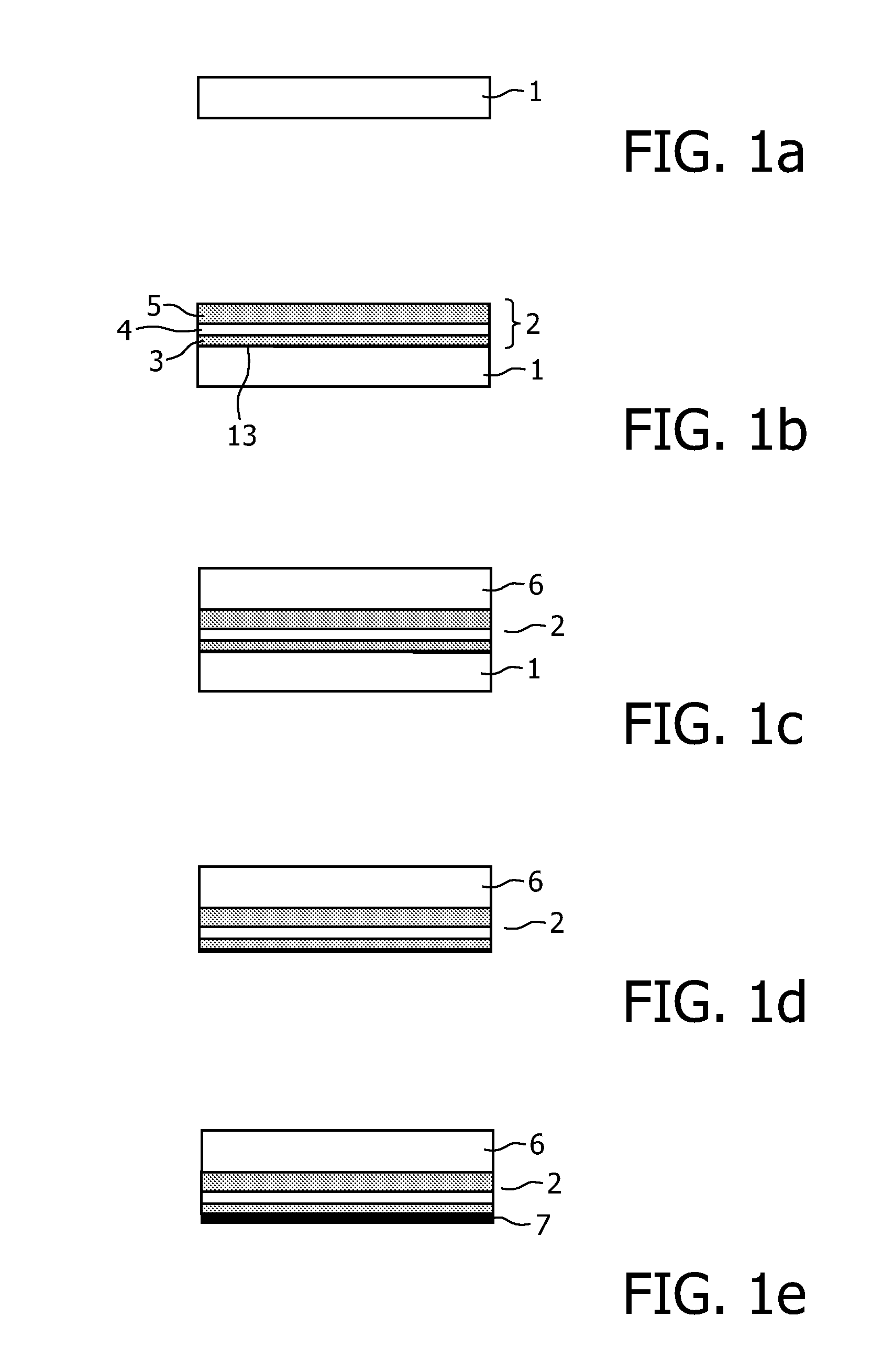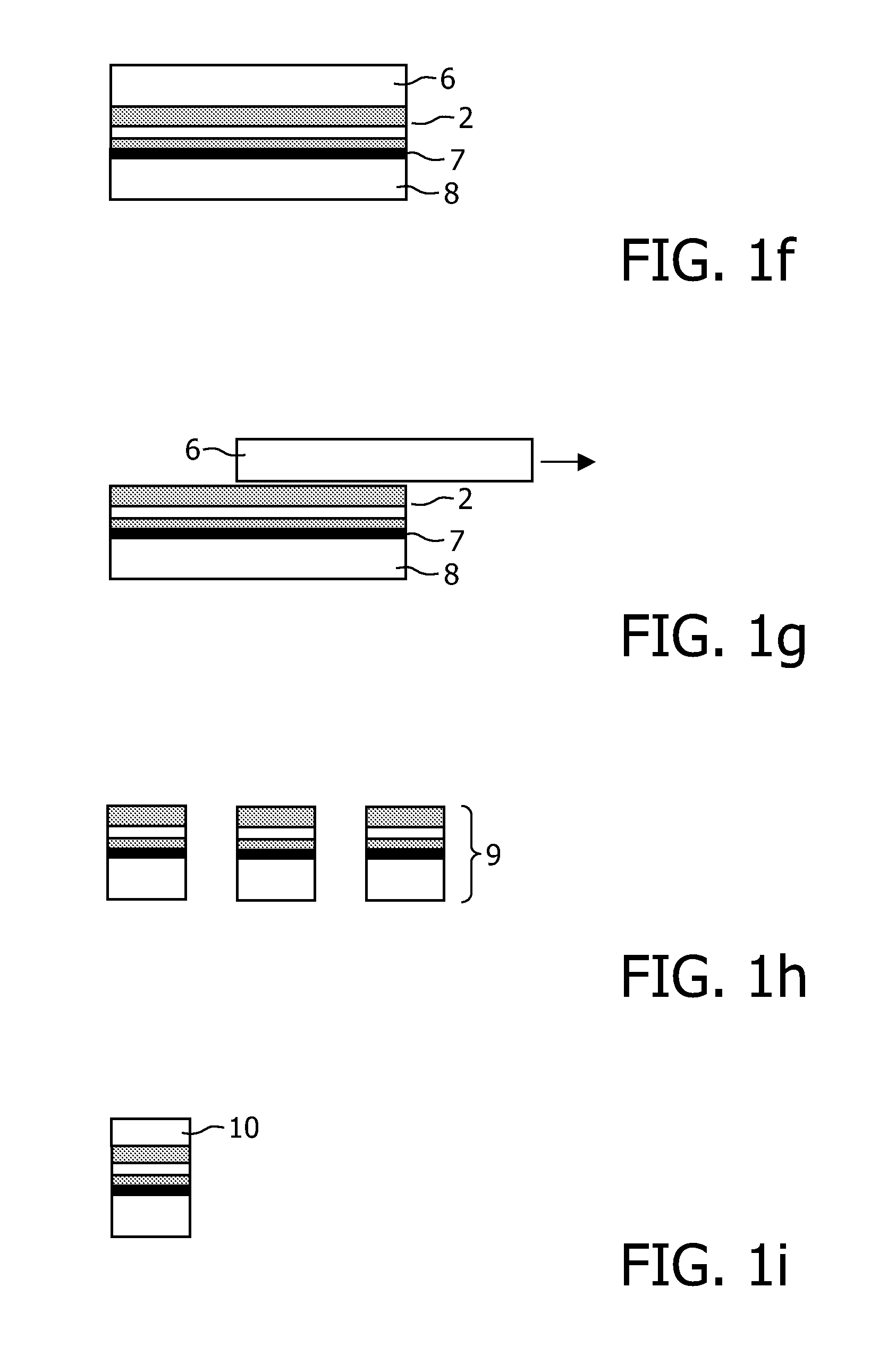Vertical extended cavity surface emission laser and method for manufacturing a light emitting component of the same
- Summary
- Abstract
- Description
- Claims
- Application Information
AI Technical Summary
Benefits of technology
Problems solved by technology
Method used
Image
Examples
Embodiment Construction
[0036]FIG. 1 shows a sequence of method steps which are performed according to an exemplary embodiment of the proposed method. In a first step, according to FIG. 1a, a GaAs semiconductor substrate 1 is provided. A layer stack 2 forming a p-doped current injection layer 13, a lower distributed Bragg reflector 3, an active region 4 and an upper distributed Bragg reflector 5 is epitaxially grown on the semiconductor substrate 1 (FIG. 1b). The two DBRs 3, 5 are stacks of many pairs of semiconductor layers, in the most simple case each λ / 4 thick at the design wavelength λ, i.e. the wavelength of the laser in the semiconductor material. Each pair is composed of a high and low refractive index layer, for example of AlGaAs. The upper DBR 5 is designed to have a reflectance of 98-99.9% (or even >99.9%) at the laser wavelength and is therefore formed of more than 20 p-doped layer pairs. In the case of the lower DBR 3, this DBR is formed of only between 4 to 13 pairs of n-doped layers resultin...
PUM
 Login to View More
Login to View More Abstract
Description
Claims
Application Information
 Login to View More
Login to View More - R&D
- Intellectual Property
- Life Sciences
- Materials
- Tech Scout
- Unparalleled Data Quality
- Higher Quality Content
- 60% Fewer Hallucinations
Browse by: Latest US Patents, China's latest patents, Technical Efficacy Thesaurus, Application Domain, Technology Topic, Popular Technical Reports.
© 2025 PatSnap. All rights reserved.Legal|Privacy policy|Modern Slavery Act Transparency Statement|Sitemap|About US| Contact US: help@patsnap.com



